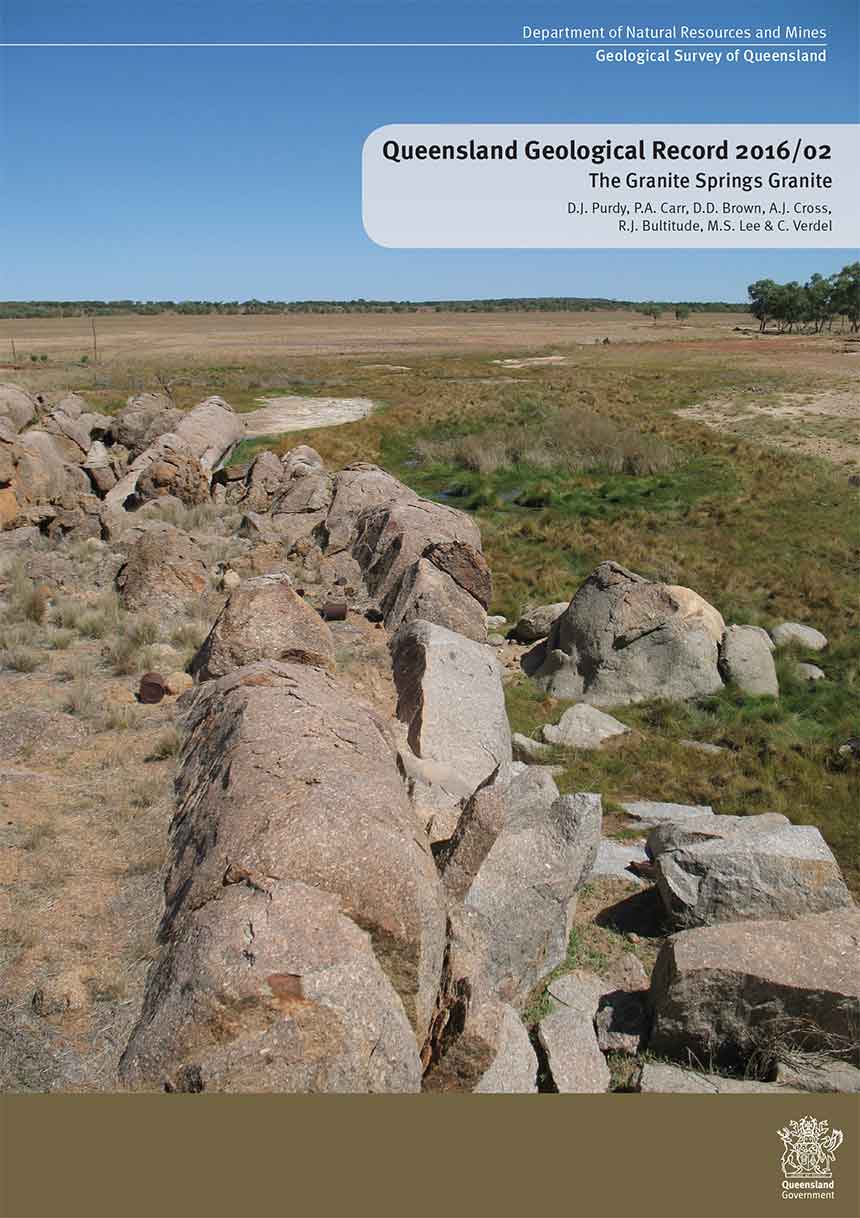


The small outcrop of granite you can explore here, is an outlier of the main Eulo Springs Granite found to the south west at Currawinya National Park. This local patch even has its own name – Eulo Granite.
As the geological transect (right) from 1895 shows, the surface outcrops of granites that occur along the Eulo Ridge have warped the surrounding rock bands.
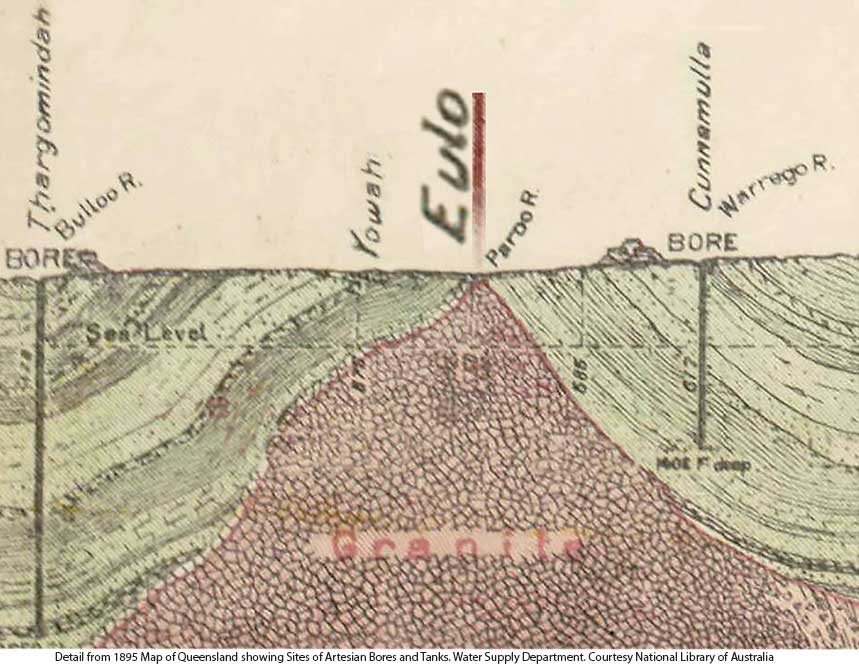
This has brought fresh water-bearing sedimentary rock layers up close to ground level. From here the water can migrate up to the ground surface along fault lines in the rock. This helps explain the profusion of springs around Eulo.
When the Eromanga Basin sediments were laid down around 100 million years ago, the Eulo Ridge bedrock granites stood as small, high relief islands in the inland sea then covering large swathes of Eastern Australia.
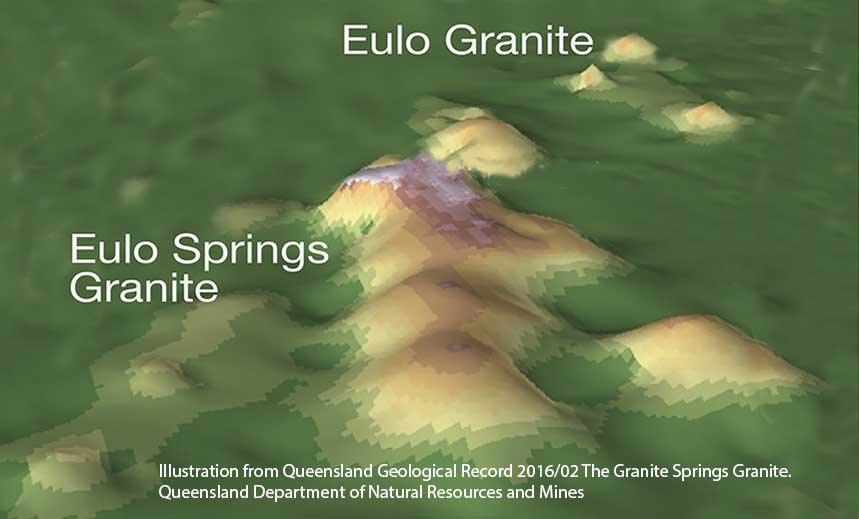
For geologists, the Eulo Ridge granites provide a rare chance to look at the very ancient (500 million years old give or take) underlying bedrock known as the Thomson Orogen.
Elsewhere across the Great Artesian Basin this bedrock is usually covered by thousands of metres of sediments. Here however they can actually walk amongst the granites and examine these rocks first hand.
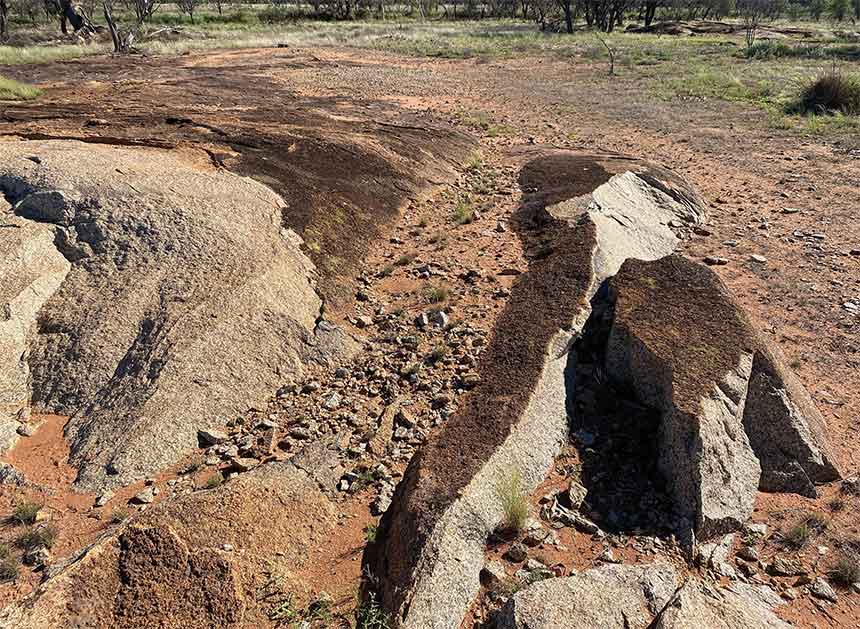
FEATURES TO LOOK OUT FOR
As you walk around the small outcrop of Eulo Granite here, see if you can locate the small depression where the granite presents a vertical, flat rock face. Granite does not naturally weather to create these shapes. Rather they are a result of rock quarry work here.
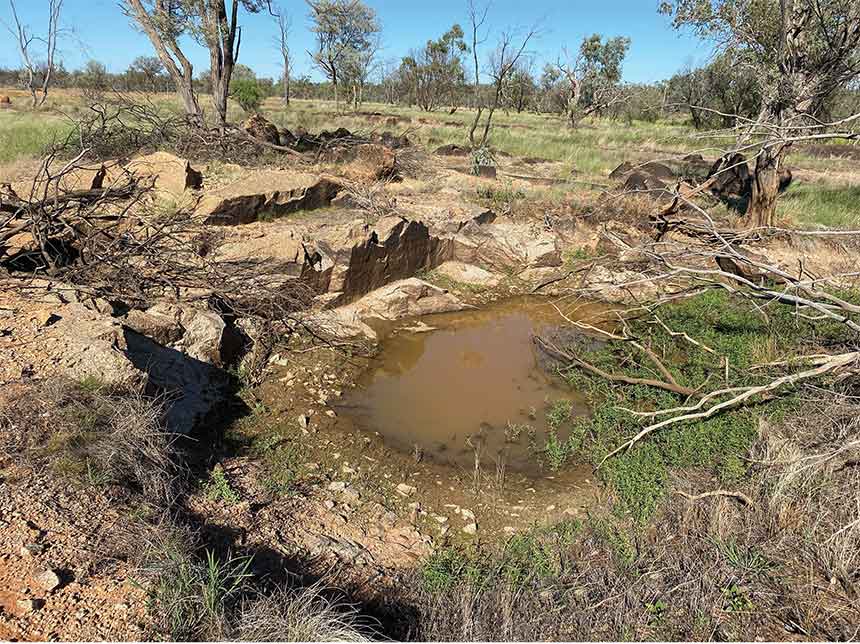
This likely occurred in the late 1920s when the bridge over the Paroo River was constructed. The granite was probably used as aggregate in the concrete. We can also see abundant traces of it beside the road down the river today, indicating it was also put to work as roadbase.
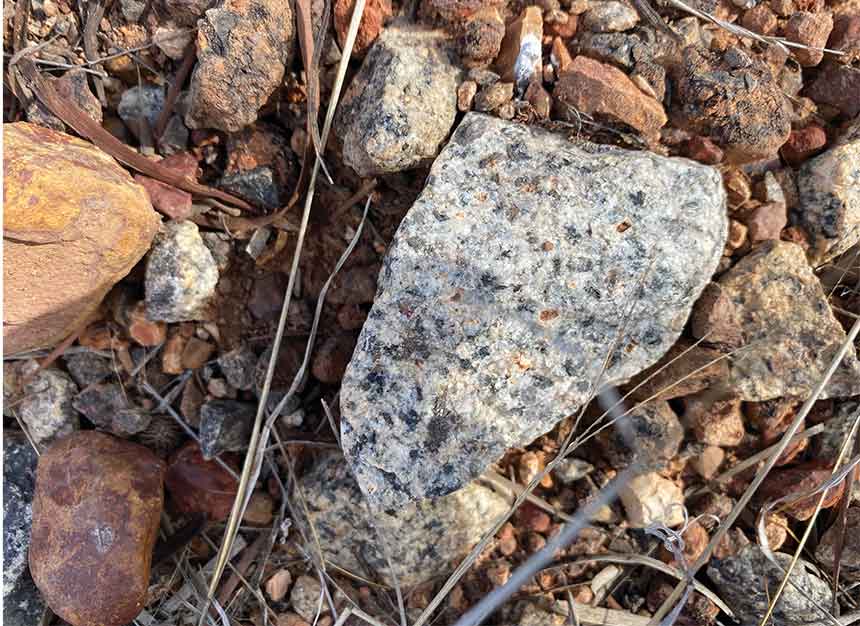
EVERYTHING YOU WISH TO KNOW ABOUT THE GRANITE ...
is contained in a wonderful report produced by the Queensland Department of Natural Resourcves and Mines. Click on the report cover below to download the PDF.
